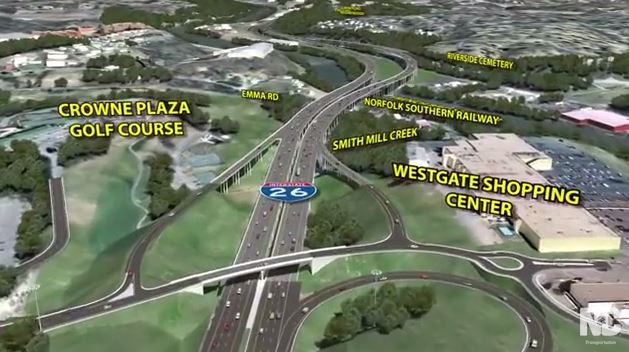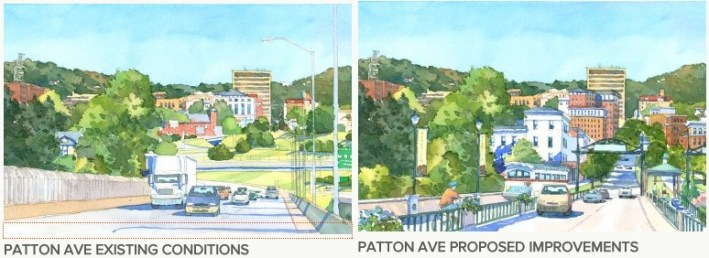Will the state of North Carolina and the Federal Highway Administration insist on widening an interstate highway through west Asheville to eight lanes? Right now, it looks like there's a very good chance of that -- and that's what frightens a lot of locals.

Highway builders want to complete the "missing link" of Interstate 26 running from Tennessee to Charleston. That missing link is actually already an interstate: I-240, built right though some of Asheville's urban neighborhoods during the urban renewal era. The highway was a major dividing line between some of the black neighborhoods in west Asheville and some more affluent white neighborhoods.
Problem is, FHWA refuses to just rename it I-26 because the highway doesn't meet some of the modern interstate standards. The DOT is exploring its options for a $600 million widening and "upgrade."
The state recently released its draft environmental impact statement. The document seems to favor a design that would widen the highway from four lanes to eight -- a plan many local residents say is unnecessary and potentially damaging. Last year, the U.S. Public Interest Research group named the project one of its top "highway boondoggles."
"Is an eight-lane freeway through the heart of a city of 85,000 really justified," says Don Kostelec, a local advocate and independent planner who is skeptical of the project.
Groups like Mountain True and the Asheville Design Center and a number of community groups had been pushing for a more city-friendly approach. They wanted a design that would preserve urban land for development, minimize air pollution, and provide additional multi-modal connections for neighborhood residents.


The state hasn't named its preferred alternative yet, but the analysis laid out in the DEIS seems to indicate it isn't taking suggestions like the ones above very seriously, despite being forced to officially consider them, says Kostelec. For example, DOT projections show 100,00 vehicles traveling the corridor daily by 2040 -- too many for the six-lane alternative. But only about 60,000 vehicles were traveling the road daily in 2013, according to DOT data, as reported by the Citizen Times, and that was only a 2.1 percent increase since 2005.
Kostelec and others doubt whether the DOT was "honestly and truthfully" considering the six-lane alternative.
"It’s as much an FHWA problem as a North Carolina DOT problem," Kostelec said. "When a meeting was held between FHWA and NCDOT, FHWA said they won’t designate a new interstate unless it meets level of service D."
"I keep seeing this stuff from U.S. DOT about 'beyond traffic' and moving beyond the old paradigm but we’re sort of having the old paradigm forced on us in Asheville."
Opponents of the eight-lane plan hope to pack a meeting with the DOT Monday evening. They are still within the "public comment" period of the planning process. But it's unclear if the powers that be are willing to listen.
"North Carolina DOT has not widened an interstate through an urban freeway since the original interstate were built," said Kostelec. "Why are you making west Asheville bear the brunt of an expanded facility again?"





